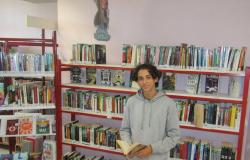Noëlle Brancard, watercolorist and pastelist, presents her exhibition at the CAC: “Jeux d’ombre et de couleurs”, open Tuesday to Saturday from 2 p.m. to 6 p.m. FREE ENTRANCE.
Passion and inspiration
This watercolor and pastel artist is from the Pyrenees. Her husband being a soldier, the whole family with four children traveled a lot and moved often. Back in the Pyrenees, finding a more stable life, Noëlle developed a passion for drawing and painting; she attends the Lisanade workshop in Lannemezan. She followed classes led by JoFis, then by Micheline Berlioz and Annie-PauleVanin.
Almost self-taught, she exhibits in the region. She has no favorite subject but a preference for dry pastel which allows her to express herself with more force. His watercolors are admired, with flowers in subtle colors, bucolic landscapes, scenes of life, portraits. We can see an astonishing reality in; landscapes, garden flowers, still lifes, portraits of animals, homes and houses from our regions. We clearly feel in his works that his inspiration comes over the seasons from his walks.
It presents around thirty paintings, each of different character and technique but harmoniously complementary, mainly in dry pastel. Indeed the artist excels in pastels; his still lifes, the shadow and light of objects, are remarkably smooth, almost identical to the originals.
The opening on Friday, May 17 in the exhibition room on the ground floor of the Albert Camus Center was a great success.
The art of pastel
What do Edgar Degas, Odilon Redon, Edouard Manet and Mary Cassatt and for us here Noëlle Brancard have in common? They all created magnificent works with pastel. Noëlle Brancard during this opening answered our question: How is the pastel made and which one does she use?
“I use dry pastel composed essentially of pigment and a small quantity of binder, they are characterized by the intensity and richness of their color. This one is made with yellow flowers grown between Tarn and Haute-Garonne The leaves of the plant are first crushed and left to dry in balls. After fermentation, they give agranate, a blackish granular paste. This agranate is then used to produce this inimitable pastel blue. blue of Tarn).






